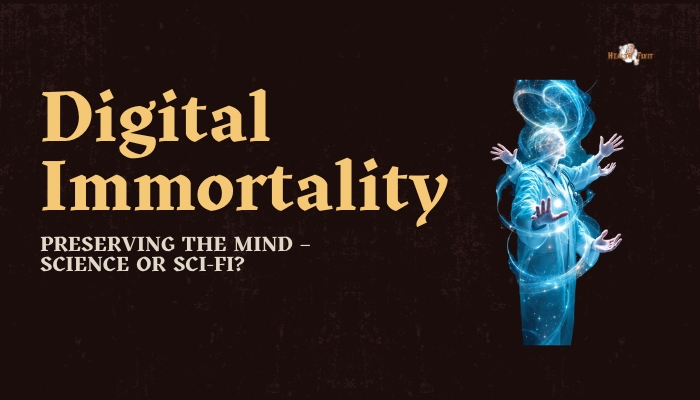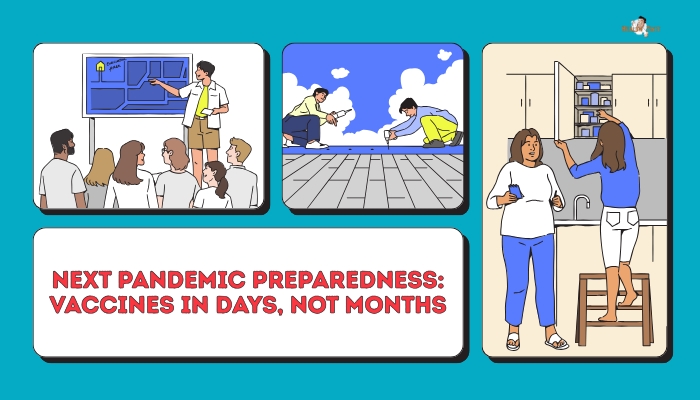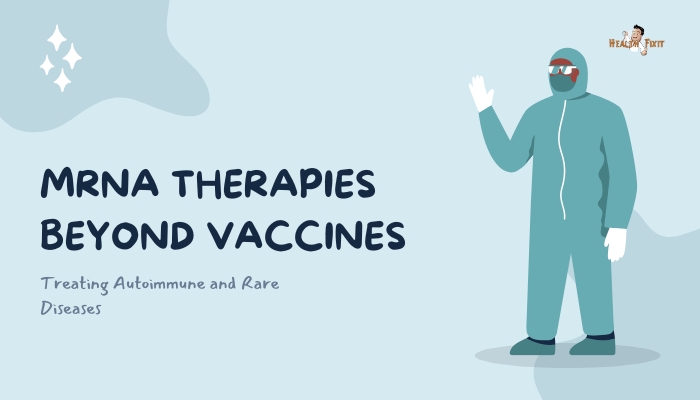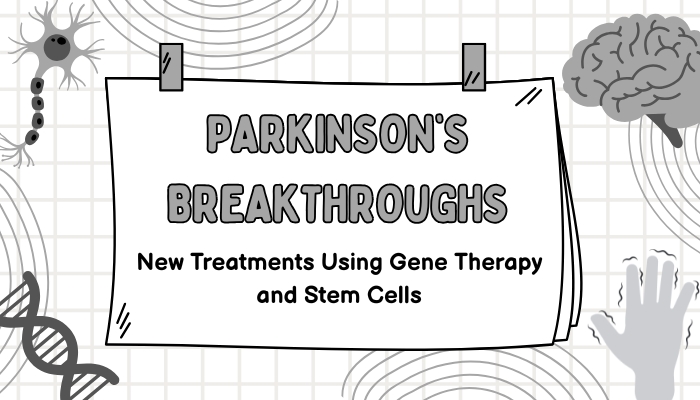Introduction
For centuries, humans have dreamed of cheating death. Legends of the philosopher’s stone or mythical fountains of youth fed hopes of eternal life.
In modern times, that quest has taken a digital turn: some envision “digital immortality,” where our memories,
personality, and consciousness live on in cyberspace. Could advanced brain imaging and artificial intelligence store our mind’s essence,
effectively continuing “us” after the body fades? This article surveys the evolving science behind mind uploading, the potential for “living digitally,
and the profound ethical and philosophical questions that follow. Is it a feasible near-future technology—or still closer to science fiction?
The Vision of Digital Immortality
Uploading Consciousness
The central premise: scan or map a person’s entire brain—neural connections, synaptic patterns—then run that data on a supercomputer or AI framework,
replicating the original mind’s memories, thoughts, even personality quirks. Proponents believe that once the “software” of consciousness is copied, the person’s identity could inhabit a virtual environment indefinitely.
Recreating the Self
In theory, this digital consciousness might interact with loved ones as an AI avatar, continue creative work, or explore virtual worlds without physical limitations. Some see it as a path to immortality, while others suspect such digital doubles might be mere simulations—lacking the subjective experience we call “consciousness.”
Technological Foundations
Brain Scanning Breakthroughs
High-resolution neuroimaging—fMRI, advanced electron microscopy, or new scanning methods—provides extremely detailed maps of brain tissue
However, capturing every synapse in a human brain (estimated at hundreds of trillions) is a staggering challenge,
well beyond current capabilities. Animal or partial rodent brain scans show partial progress, but scaling up is daunting.
AI Modeling of the Mind
Even if we had a complete structural map of neural circuits, we’d need an AI or computational model that accurately reproduces how those circuits generate cognition
, emotion, and memory. Neural networks mimic certain brain functions, but a full functional replication is a deeper leap, requiring breakthroughs in computational neuroscience.
Storage and Processing
Assuming each synaptic detail must be stored and simulated in real-time, the data load for a full human connectome dwarfs typical supercomputing tasks.
Some estimate exabytes of storage, plus unimaginable computing cycles. Ongoing improvements in quantum computing or advanced HPC might eventually handle such tasks, but it’s still speculative.
Current Research and Projects
Connectome Initiatives
Major programs like the Human Connectome Project aim to map the brain’s wiring. Though not fully designed for uploading consciousness, their high-resolution scans of brain structure might someday serve as a blueprint. Similarly, the BRAIN Initiative invests in novel imaging and neuronal recording tools that could underpin future mind uploading.
Brain Preservation Foundations
Some organizations offer “neuroscience-based cryonics,” preserving brains for potential future scanning.
Others sponsor prizes for achieving high-fidelity electron microscopy of entire mammalian brains. While indefinite preservation doesn’t guarantee successful reanimation or digital revival, it’s part of the pipeline.
Early Digital Avatars
A simpler approach uses digital avatars that mimic personality—like recording a person’s voice, mannerisms,
or conversation style for an AI chatbot. Though nowhere near true consciousness, it fosters illusions of “continuing presence” after death. Some see these chatbots as a stepping stone to more sophisticated mind clones.
Philosophical and Ethical Dimensions
Identity and Authenticity
Even if a perfect neural map is created and run in a simulator, is it truly “you”? Many philosophers argue subjective experience (qualia) might not transfer.
Others see no essential difference if the patterns of thinking and memory remain consistent. The debate on personal identity remains unresolved.
Informed Consent and Privacy
If someone’s entire mind is digitized, it’s not just medical records at risk—all personal memories, secrets,
preferences are exposed. Laws around data ownership, hacking, or unauthorized reproduction of a mind would be crucial. Additionally, what about scanning individuals who cannot consent?
Societal Impacts and Inequality
If digital immortality were real, it might be extremely expensive, accessible primarily to the rich. This scenario could exacerbate social stratification, with a digital aristocracy persisting beyond normal lifespans. Alternatively, widespread adoption might shift fundamental aspects of relationships, inheritance, or job markets.
Scientific Skepticism
Complexity of the Brain
Skeptics highlight that replicating neural connections alone misses dynamic states—neurotransmitters, plastic synapses, astrocytes, glial cells. The brain is a living organ with continuous biochemical flux, not just static wiring.
Gap Between Structure and Function
Knowing the connectome (wiring diagram) might not automatically yield understanding of emergent consciousness. The “software” of the mind could hinge on ephemeral patterns of electrical activity and ephemeral biochemical states.
Time Horizon
Even optimists concede genuine mind uploading is decades or centuries away, if feasible at all. Meanwhile, partial digital immortality (chatbot-based personalities or memory archives) can mimic certain aspects but remain “shallow” reproductions.
The Future Outlook
Incremental Gains
We might see incremental steps: improved VR “memorials,” partial cognitive prosthetics for real patients with degenerative diseases, or advanced speech-based AI capturing a person’s style. These add small pieces to the puzzle, not a full digital consciousness.
Brain Emulation in Stages
Some foresee “subsections” of the brain emulated first, like the visual cortex or a memory region, integrated with neural prosthetics in living patients. If partial success emerges, bridging the entire brain might become more plausible.
Cultural Acceptance
As lifespans extend and technology merges deeper with daily life, cultural attitudes might shift, normalizing “backup” of mental states. But robust debate will persist around authenticity, morality, and potential unforeseen consequences.
Practical Tips for the Curious
- Stay Grounded: True “uploading consciousness” remains speculative. Avoid claims from unverified companies promising immediate digital immortality solutions.
- Explore Ethical Debates: If investing in cryonics or mind uploading projects, consider philosophical stances, ethical codes, and your own beliefs about identity.
- Watch Neurotech: Real advances in BCIs, brain mapping, or AI for partial memory assistance are more immediate. Follow reputable labs or academic conferences.
- Memorial Tech: If you want to preserve your voice or stories, consider advanced interview-based chatbots or VR “legacy” apps as a stepping stone.
Conclusion
The concept of digital immortality—preserving a mind in silico—both thrills and unsettles. We do see glimpses of progress in advanced brain imaging
, AI-based neural modeling, and partial “memory chatbots,” but bridging the vast gap between scanning a brain and replicating conscious experience is monumental.
Whether or not full mind uploading becomes reality, the push to capture or extend aspects of human consciousness via technology will reshape how we view life,
death, and identity. For now, the dream of living on as a digital self remains more aspiration than current possibility,
but ongoing research suggests that the line between science fiction and feasible future might not be as distant as we once imagined.
References
- Sandberg A, Bostrom N. Whole brain emulation: a roadmap. Technical Report #2008–3. Future of Humanity Institute, Oxford University.
- Markram H. The human brain project: bridging the gap between brains and machines. Science. 2012;338(6111):1202–1203.
- Seung HS. Connectome: how the brain’s wiring makes us who we are. Houghton Mifflin Harcourt; 2012.
- Koene RA. Emulative mind uploading: a concept. Int J Mach Conscious. 2012;4(1):53–68.
- Yuste R, Fairhall AL. Temporal dynamics in mind uploading: bridging structure and function. Trends Neurosci. 2019;42(5):327–329.
- Sandel MJ. The ethics of enhancement. N Engl J Med. 2009;361(24):2424–2426.
- Bailetti E, et al. Digital immortality: emerging evidence for partial mind uploading technologies. Curr Opin Behav Sci. 2021;40:121–128.
- Warwick K. The cyborg revolution and mind uploading. Philos Trans A Math Phys Eng Sci. 2020;378(2166):20190176.
- Gorgolewski KJ, et al. The challenge of large-scale integration of neuroimaging data. Nat Neurosci. 2019;22(7):1005–1014.
- Reardon S. Brain preservation, scanning, and the quest for immortality. Nat News. 2017; Online.







